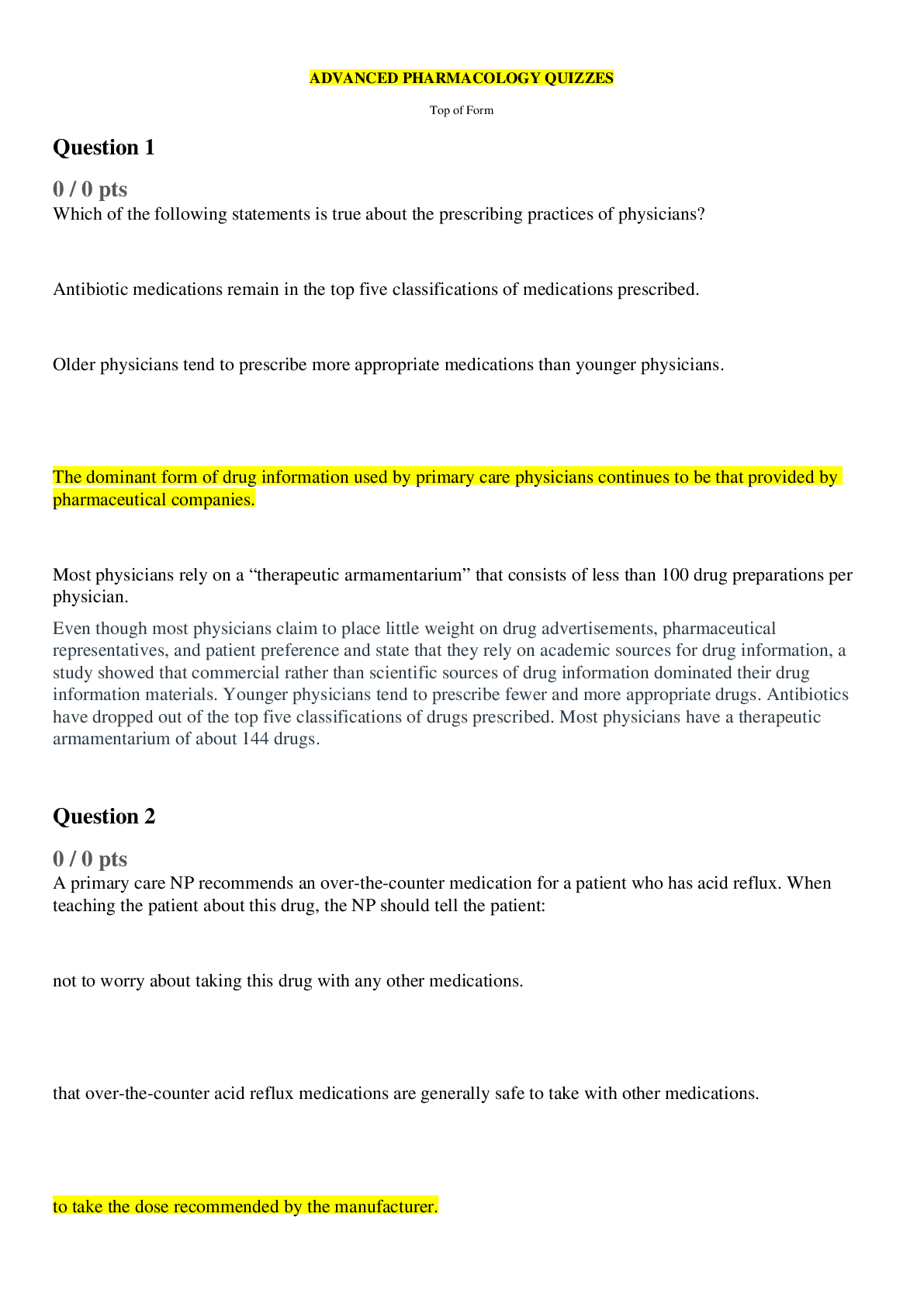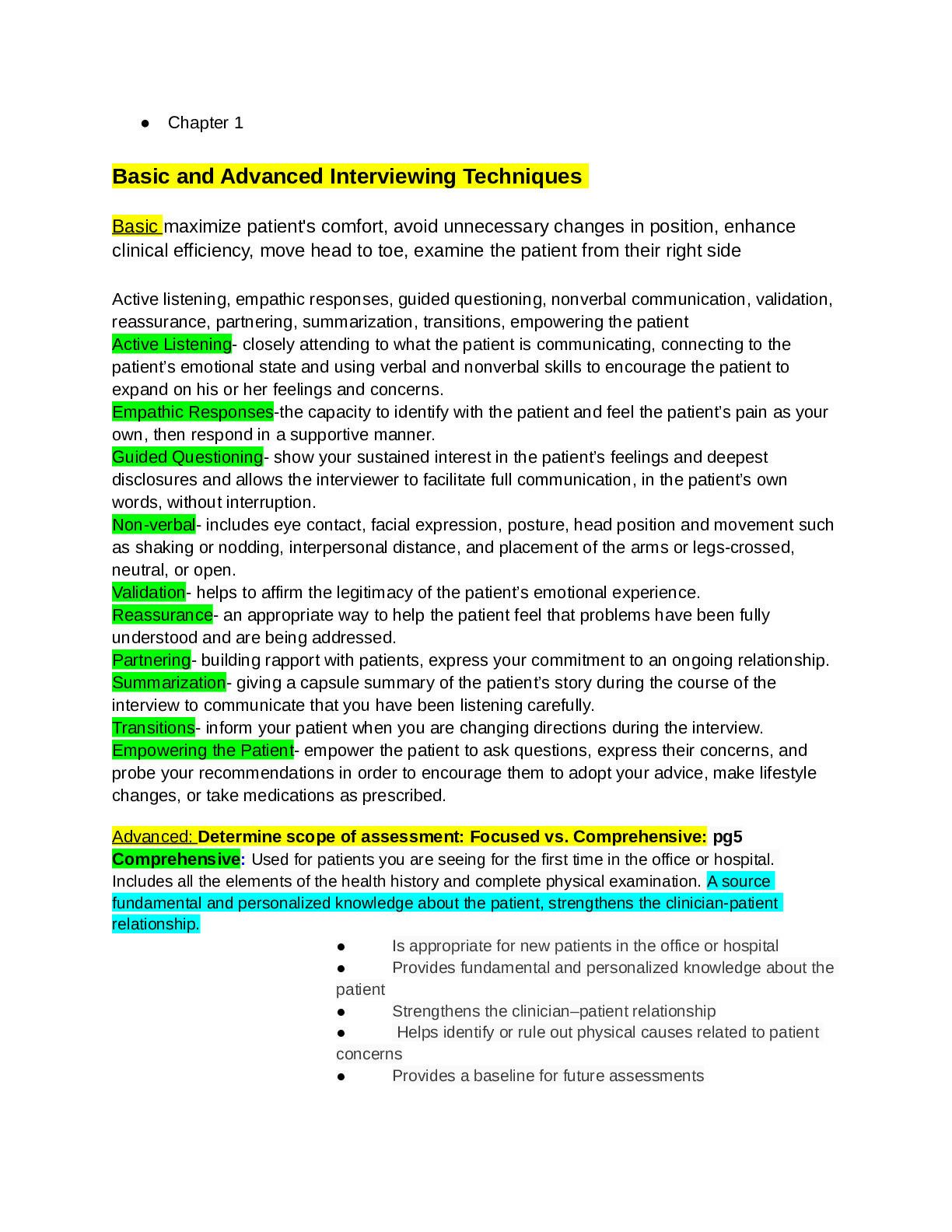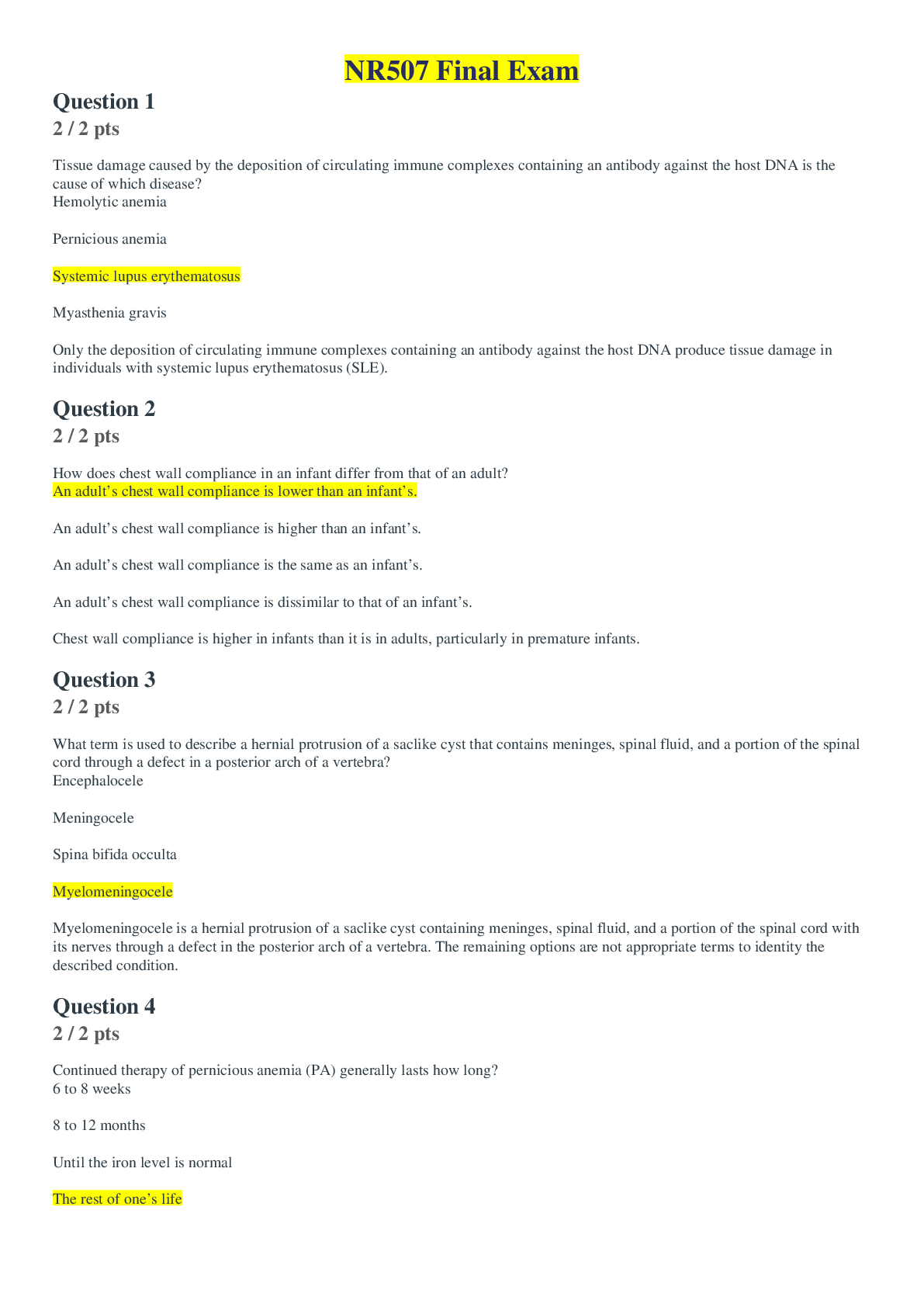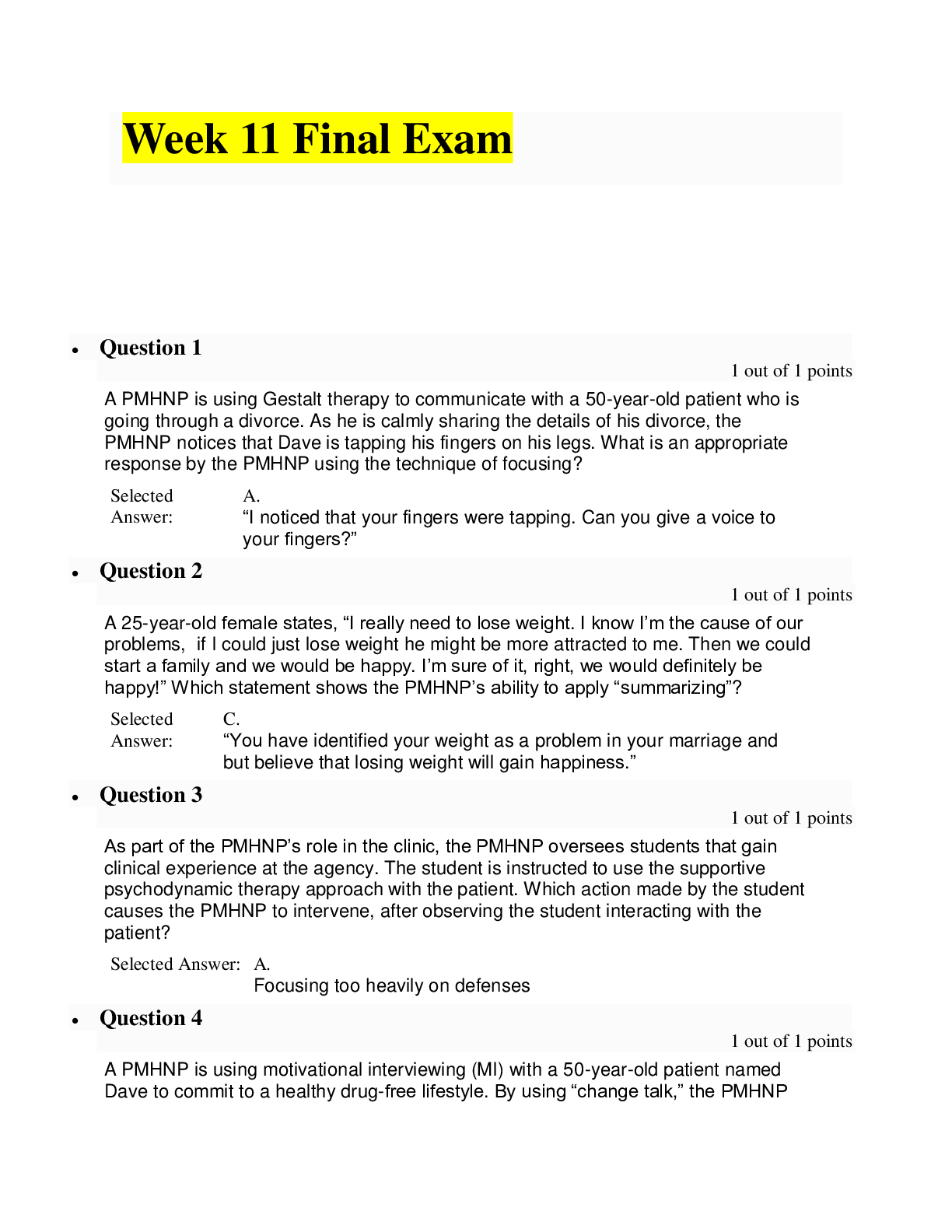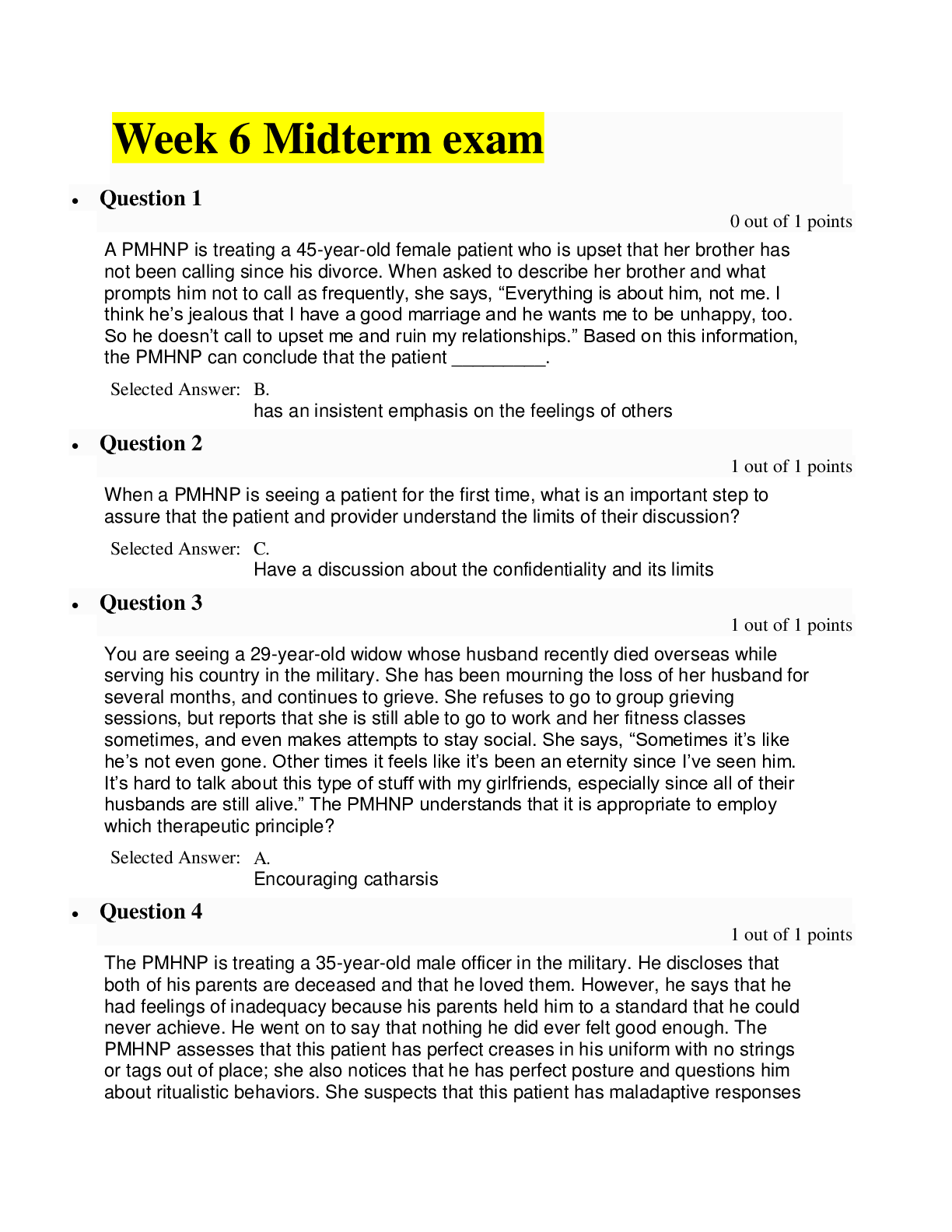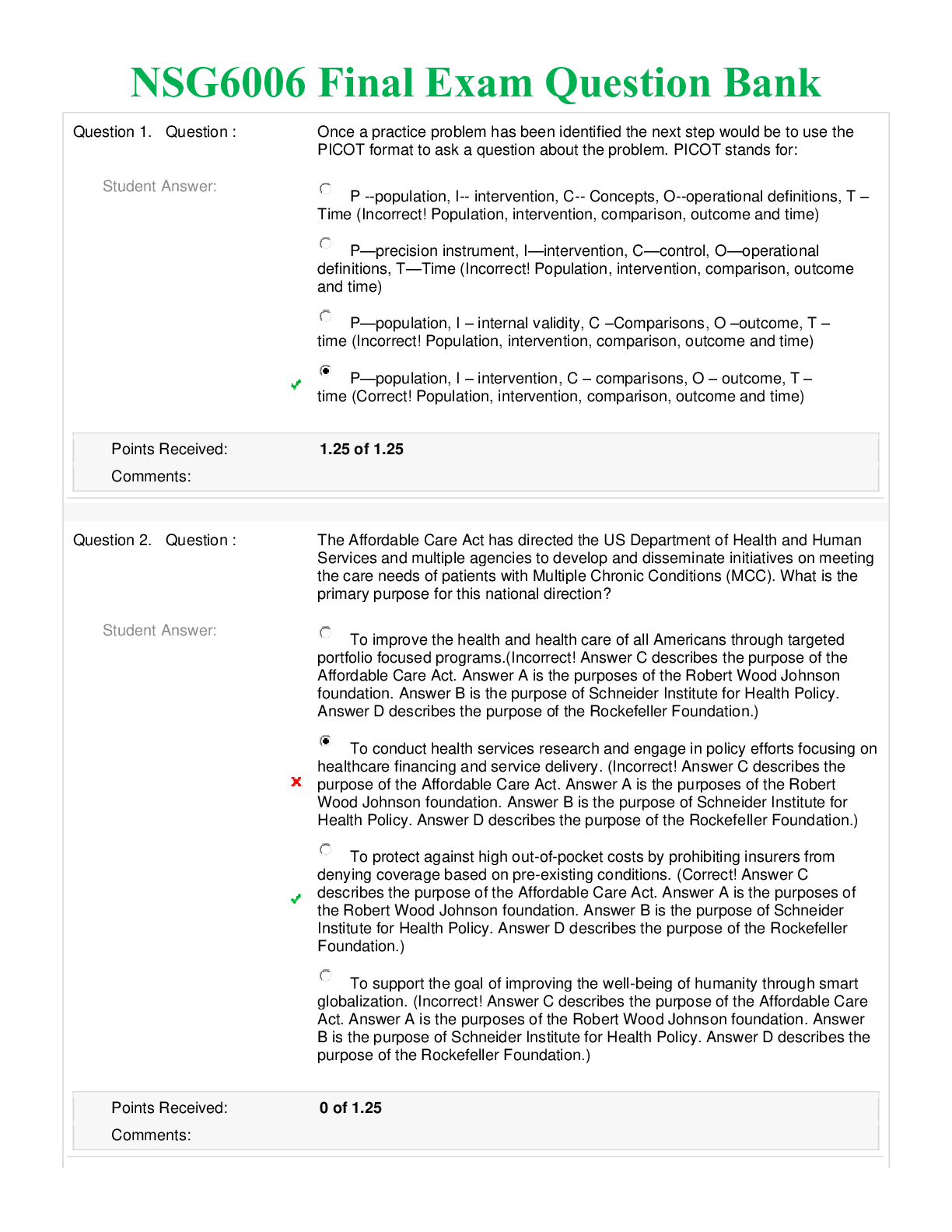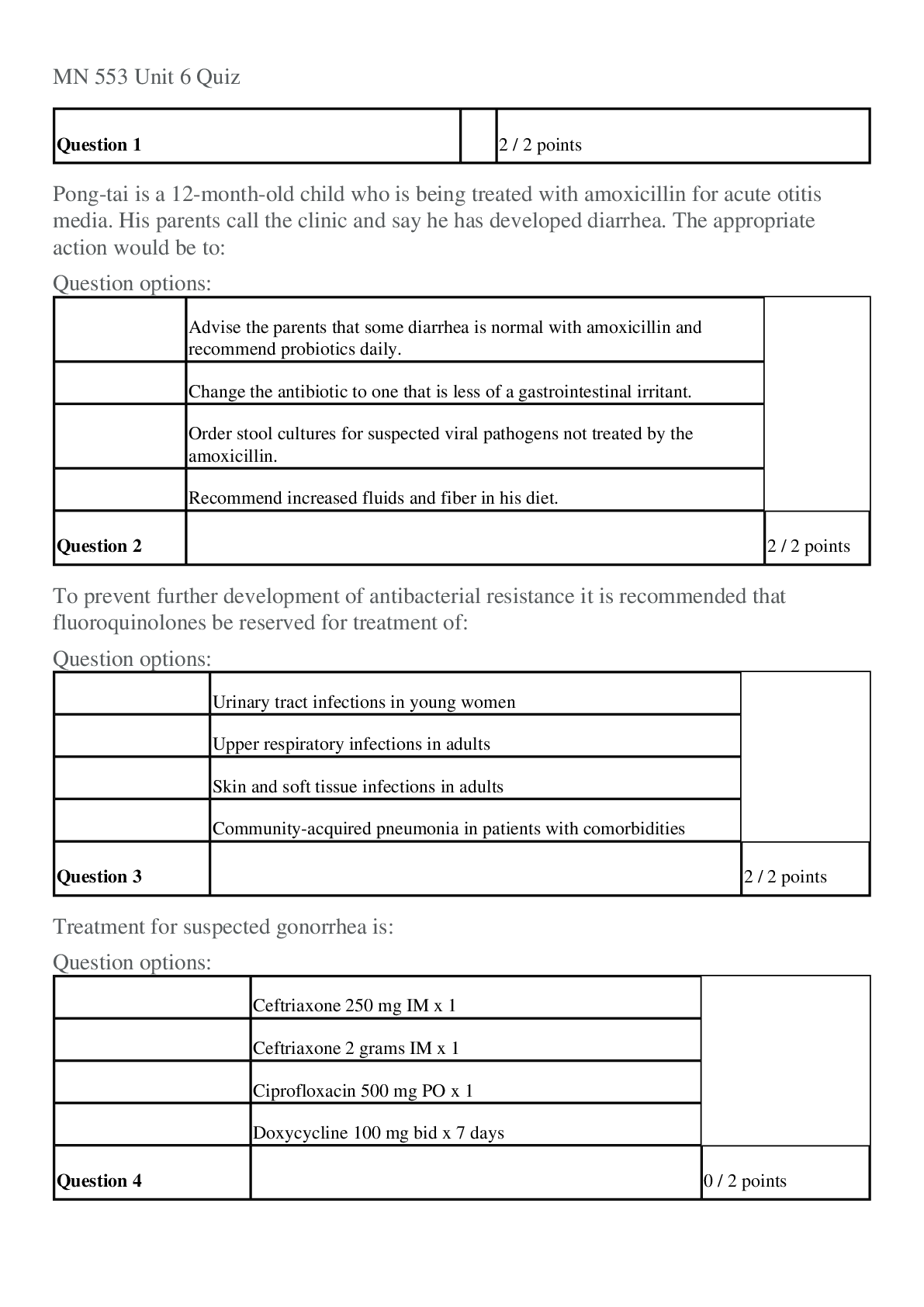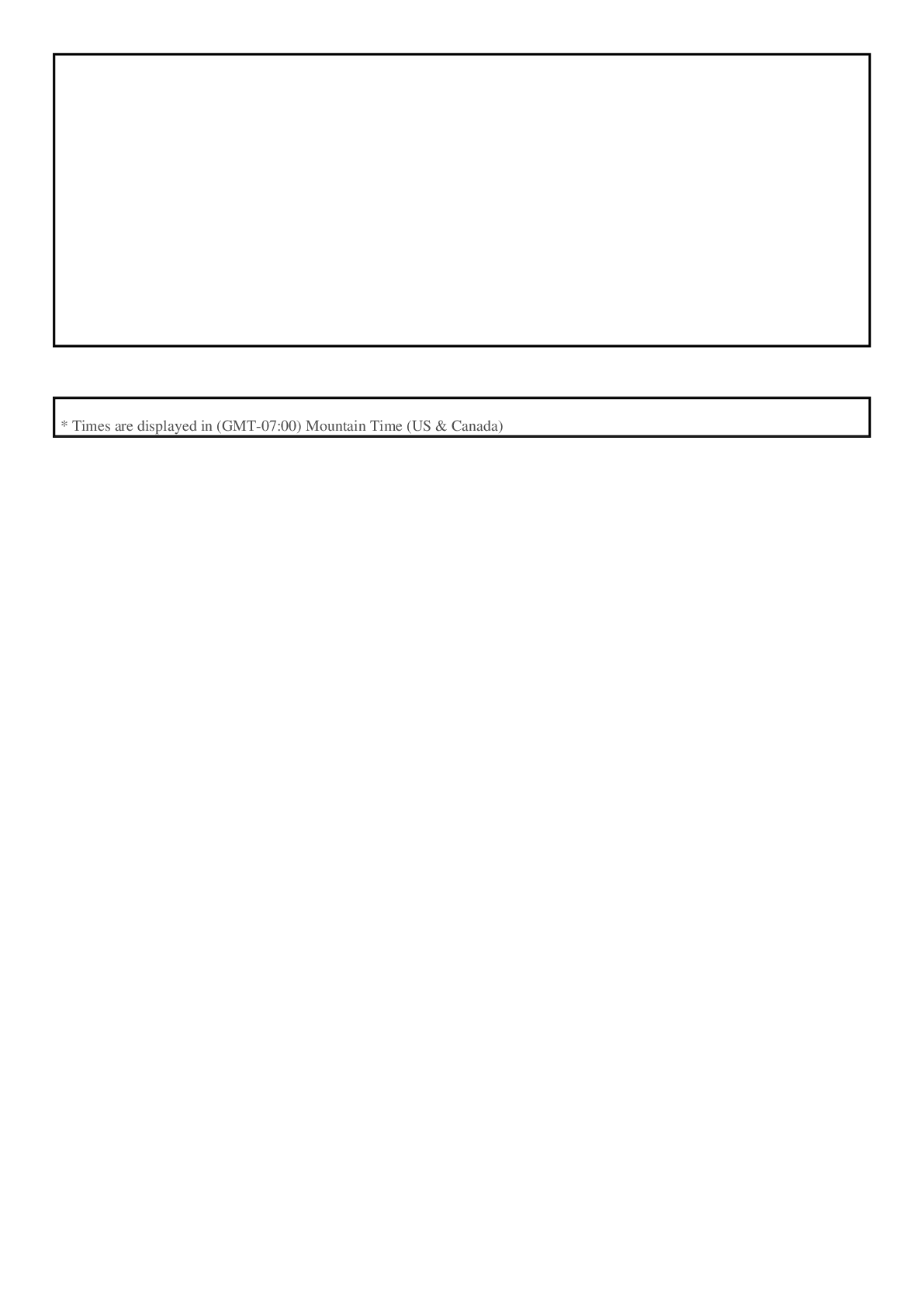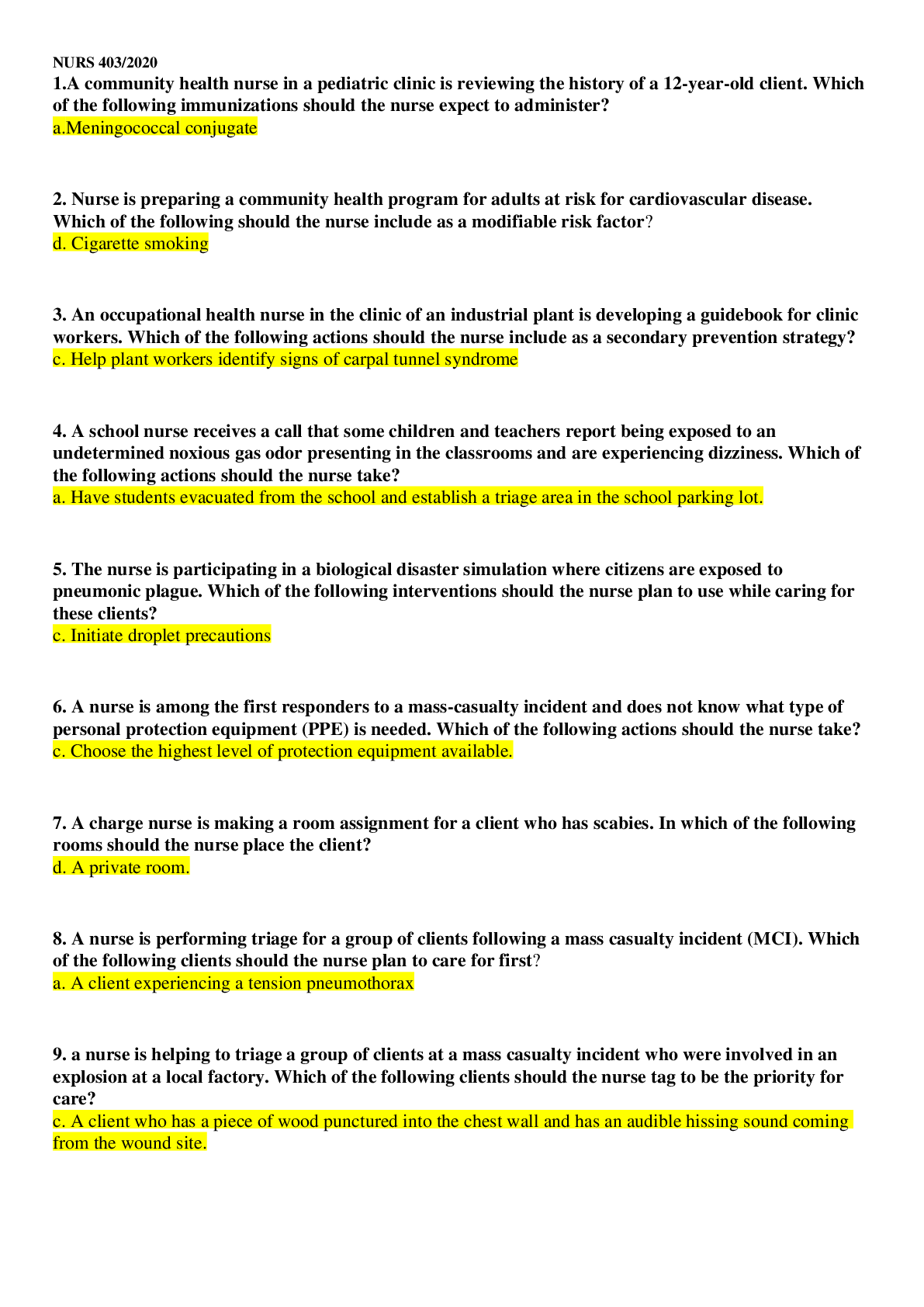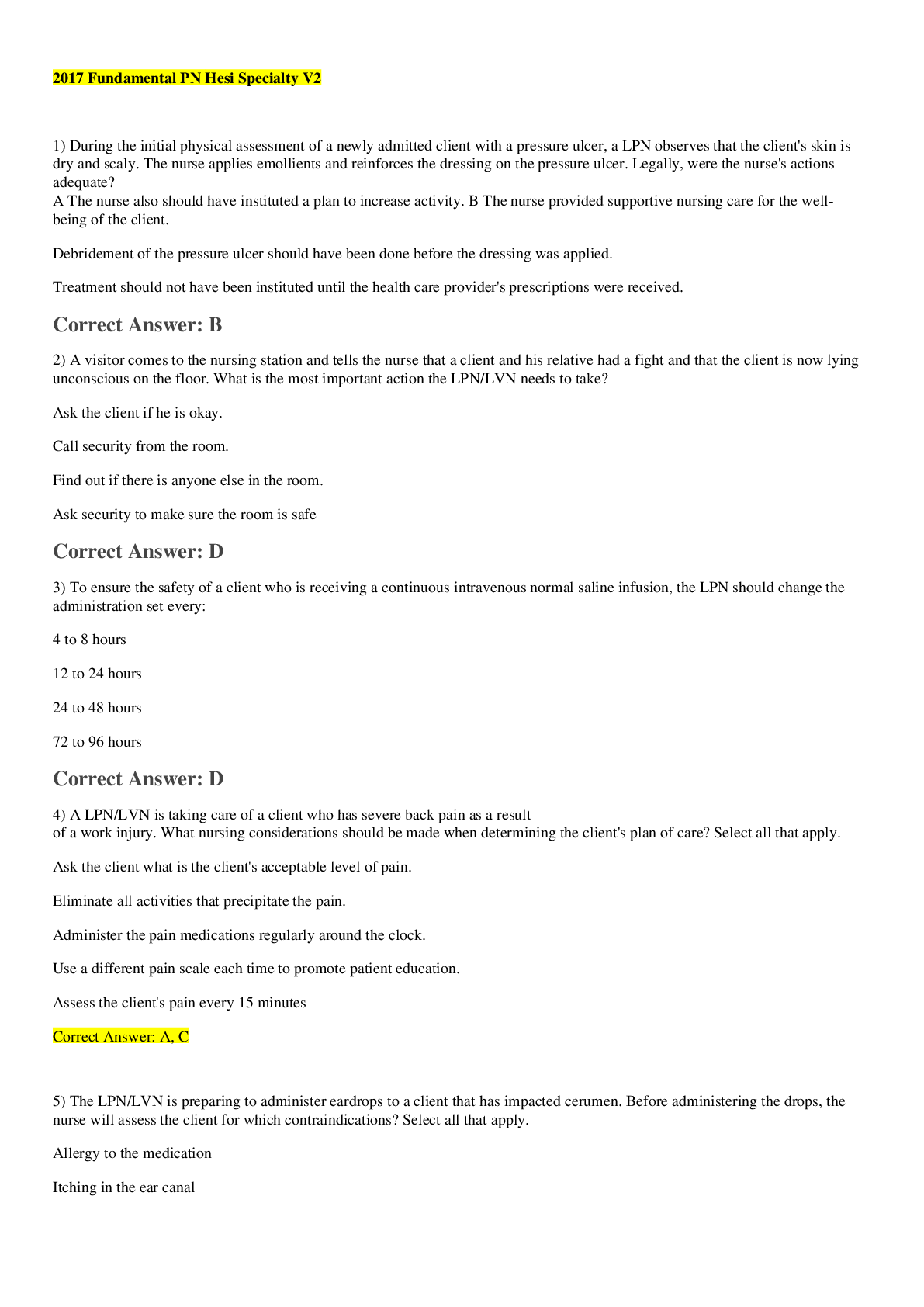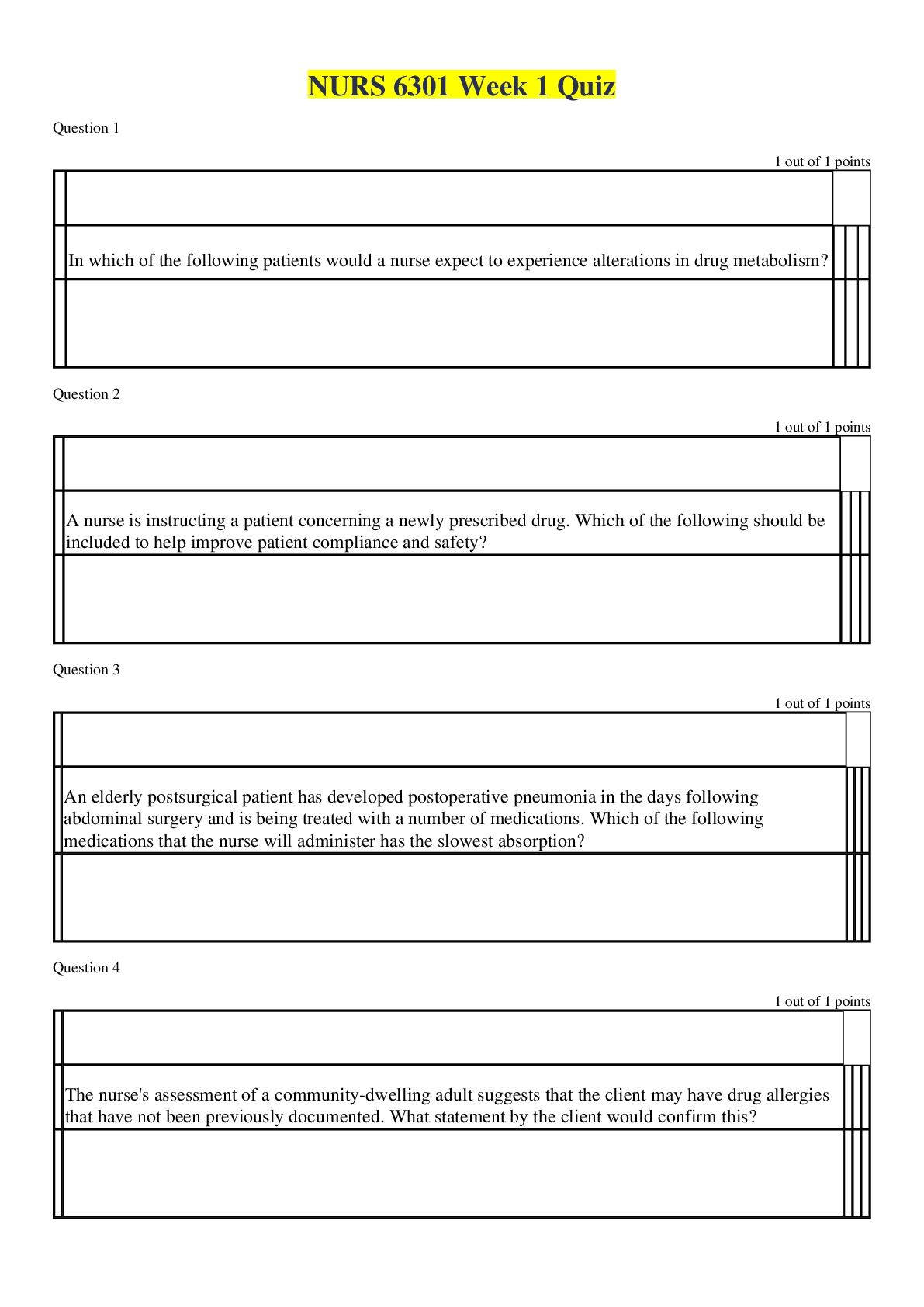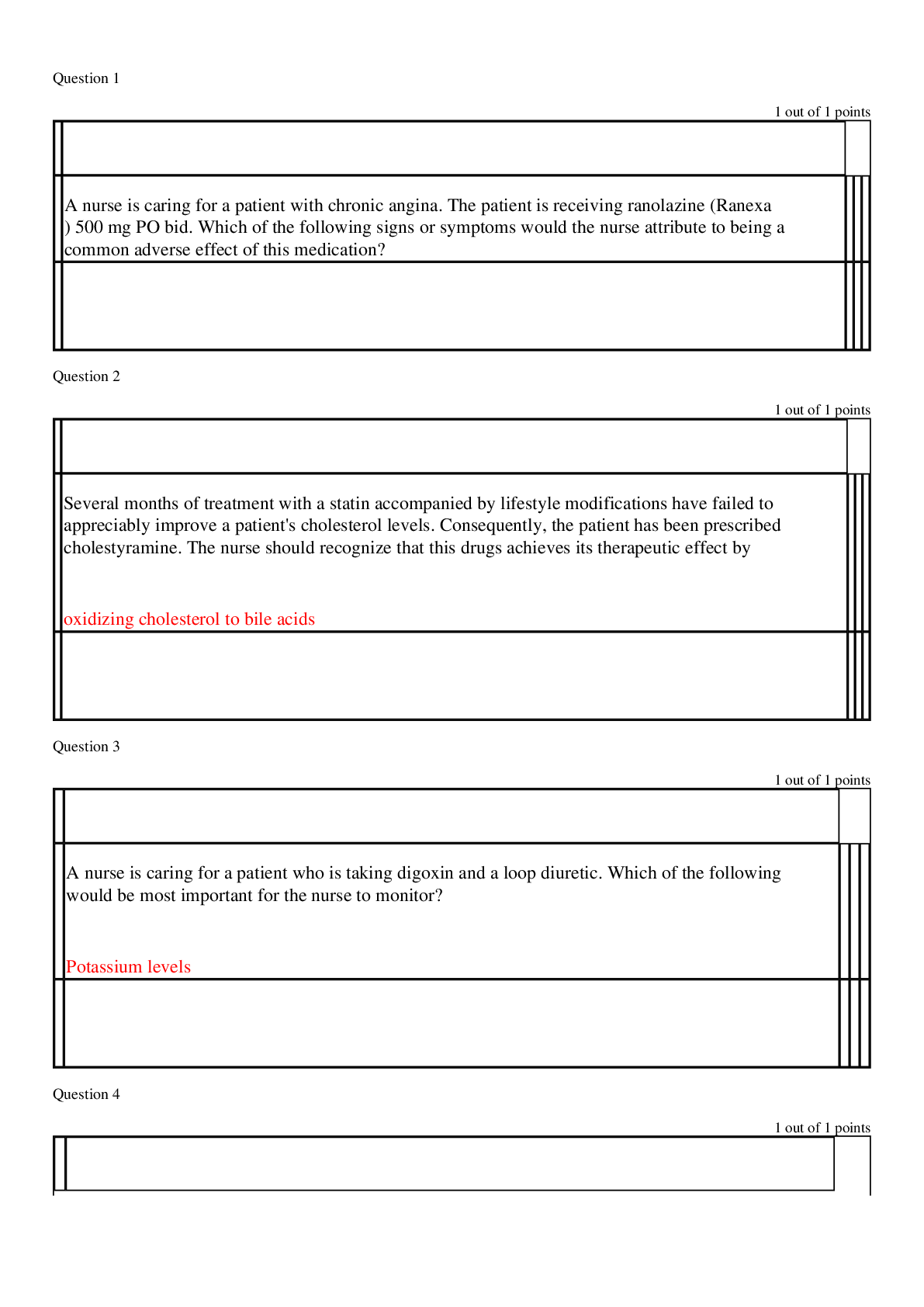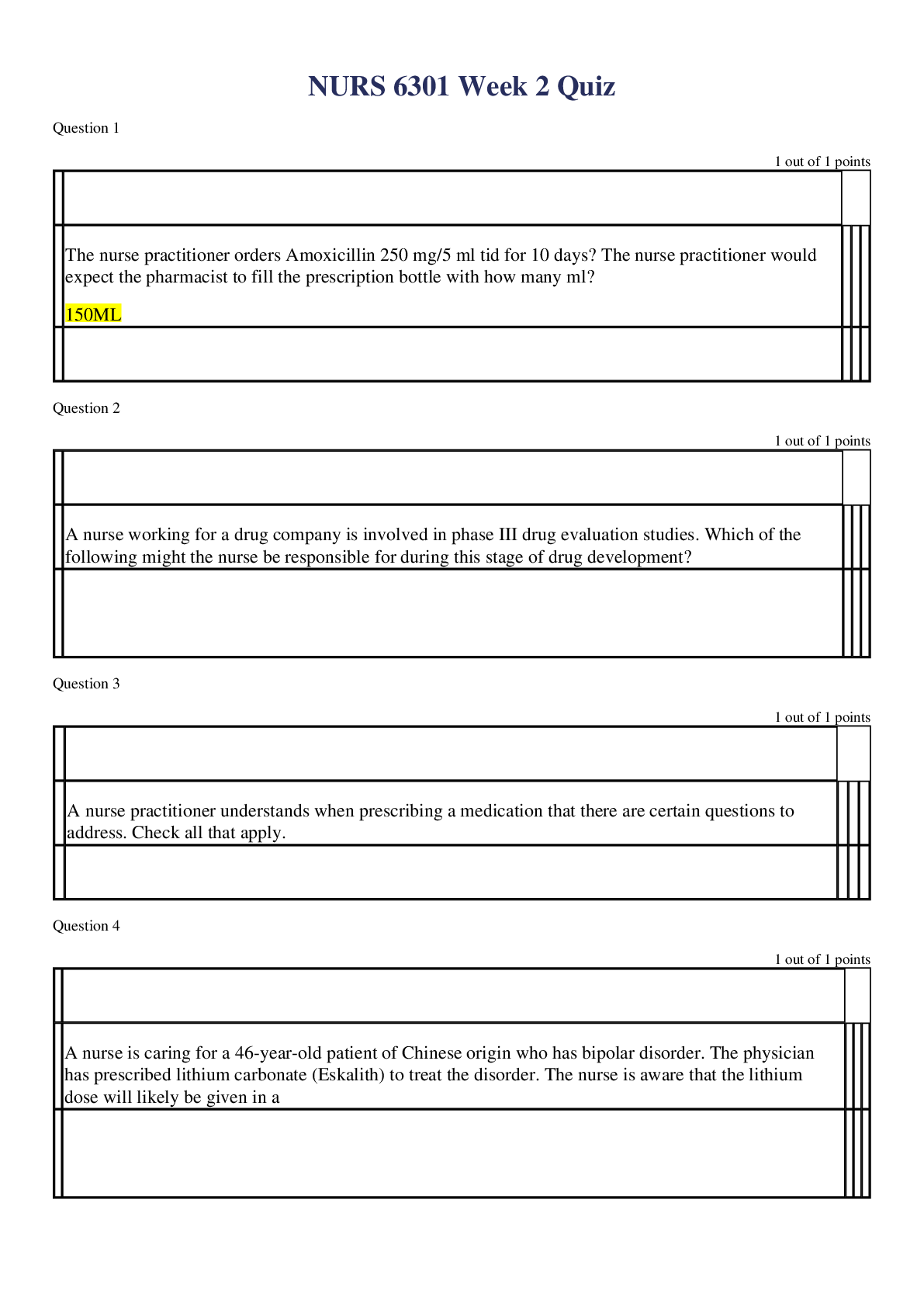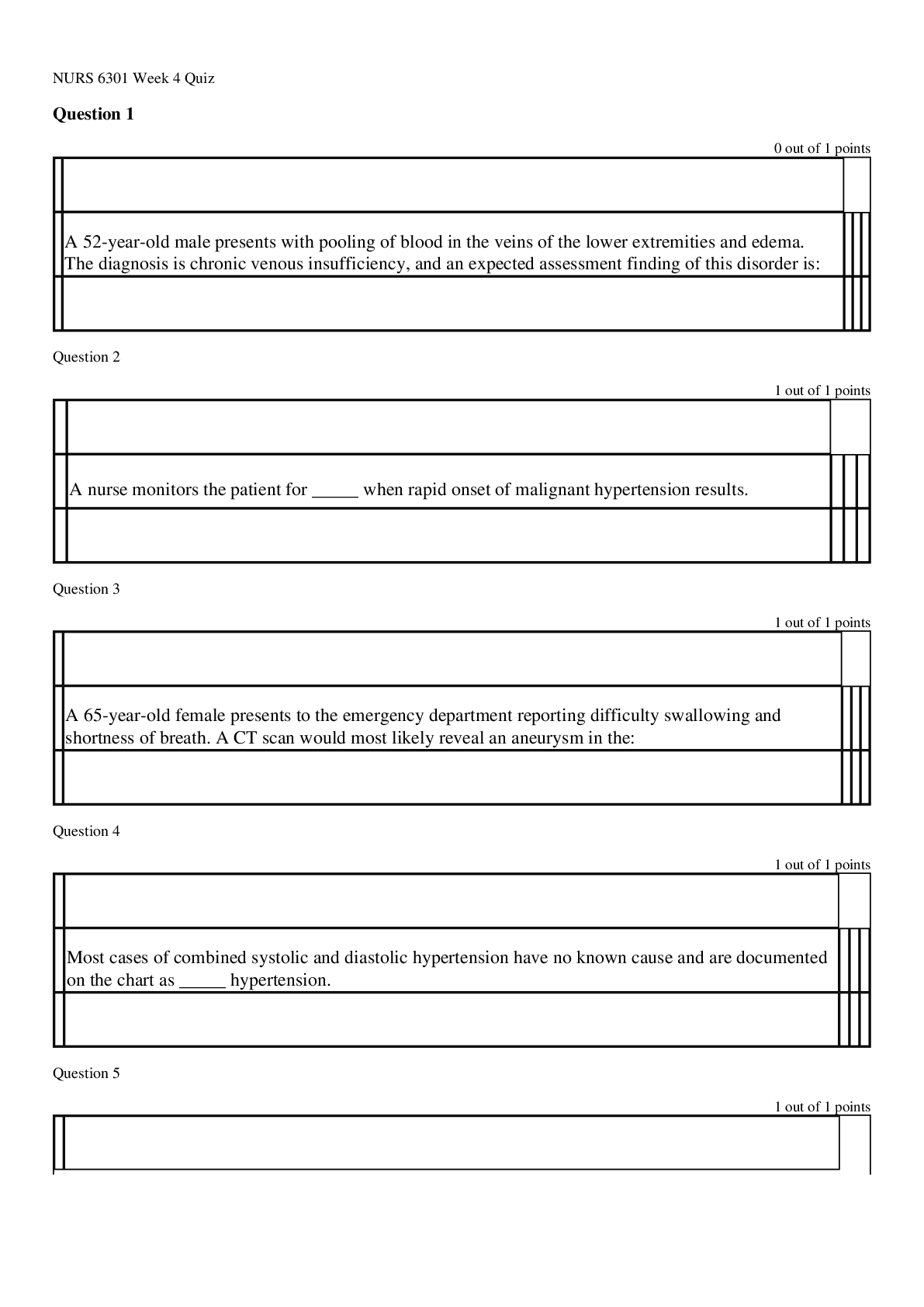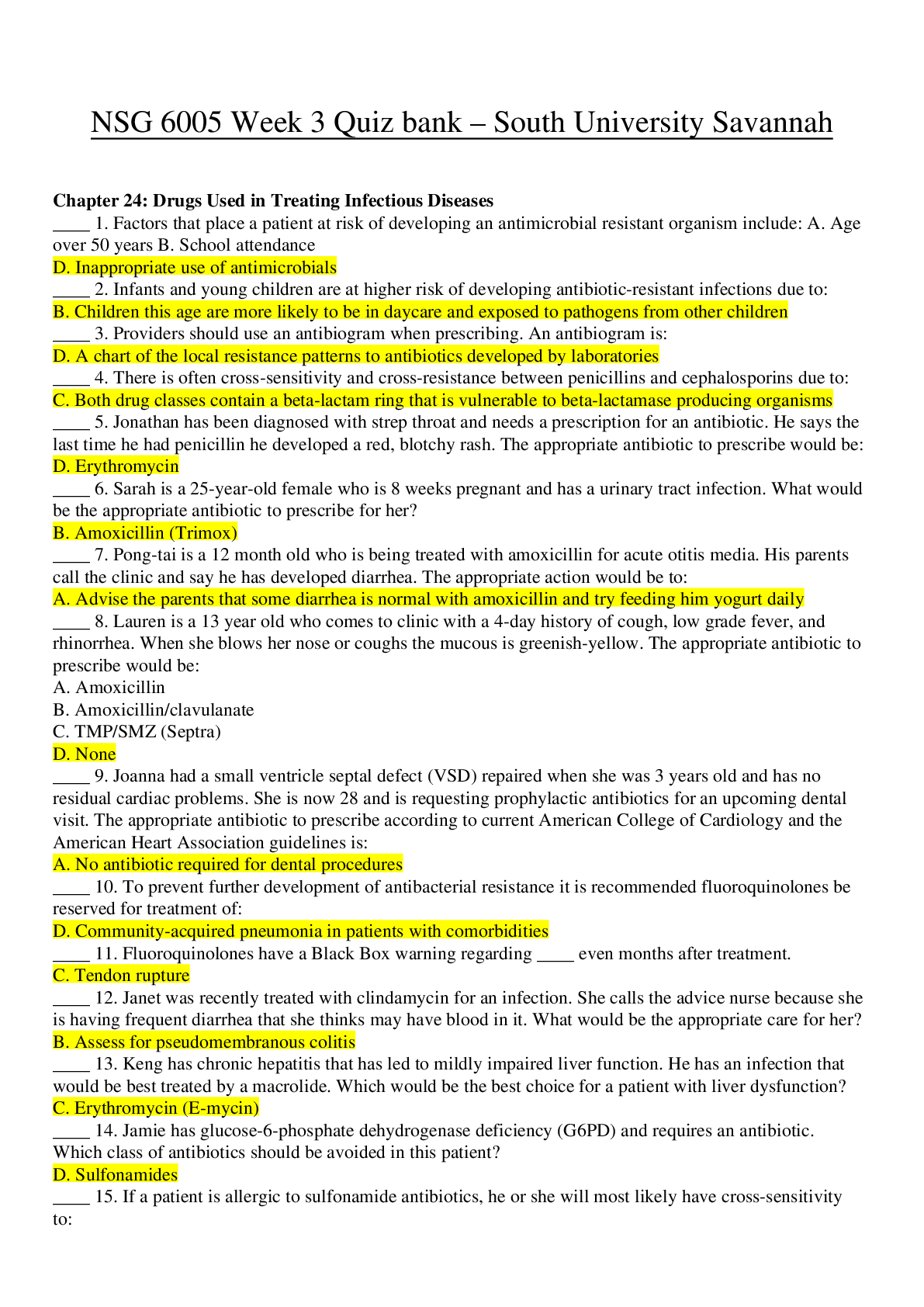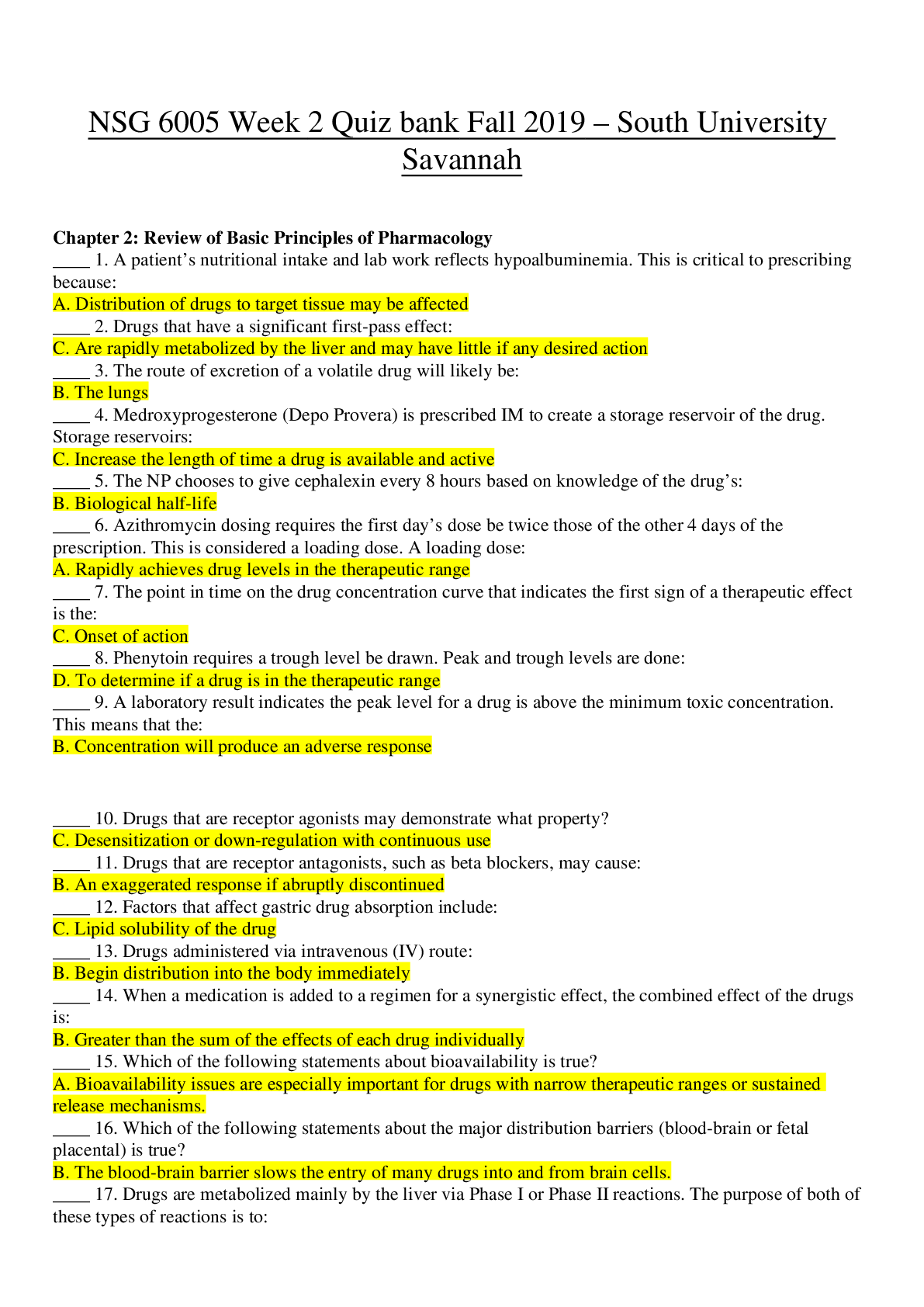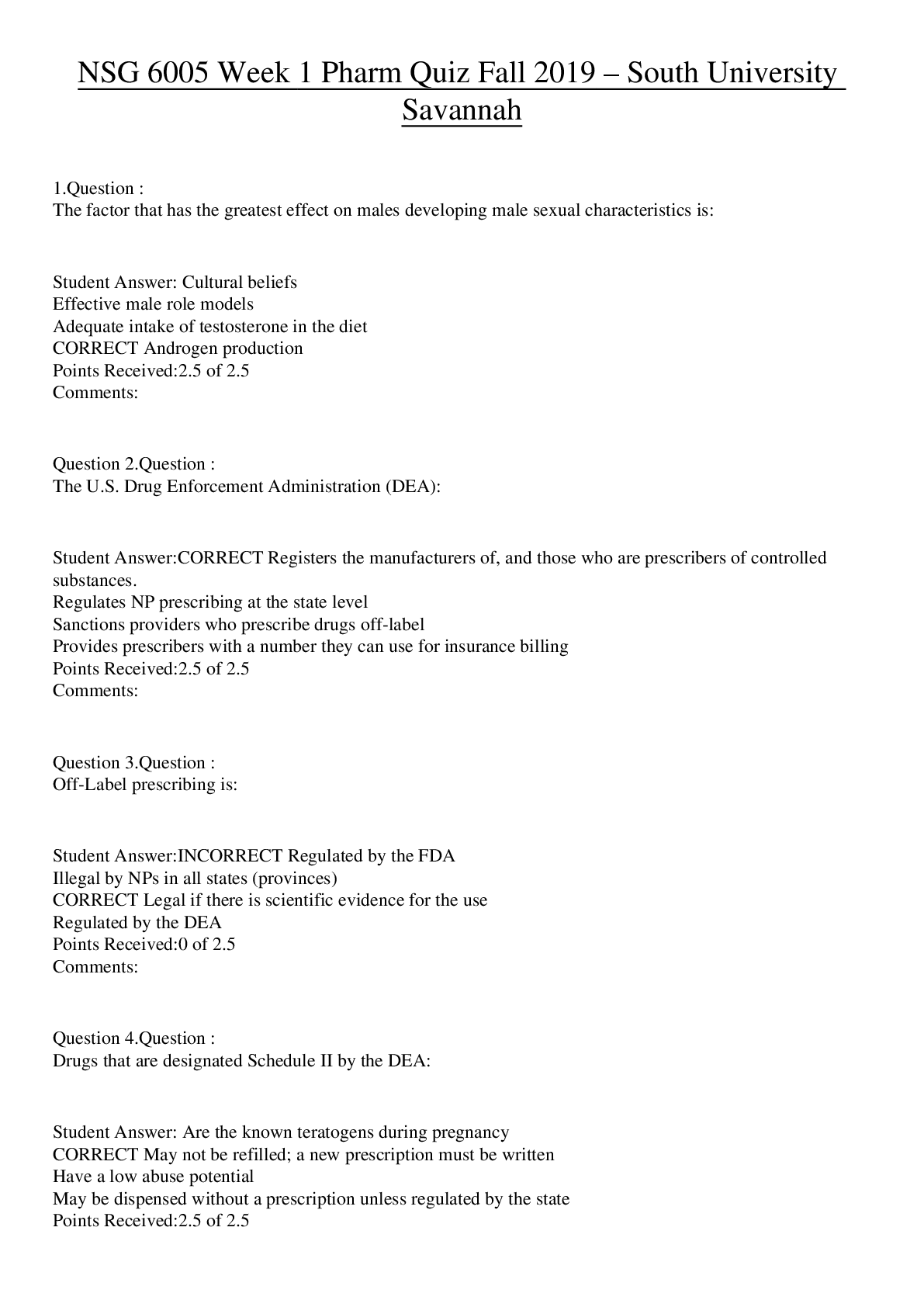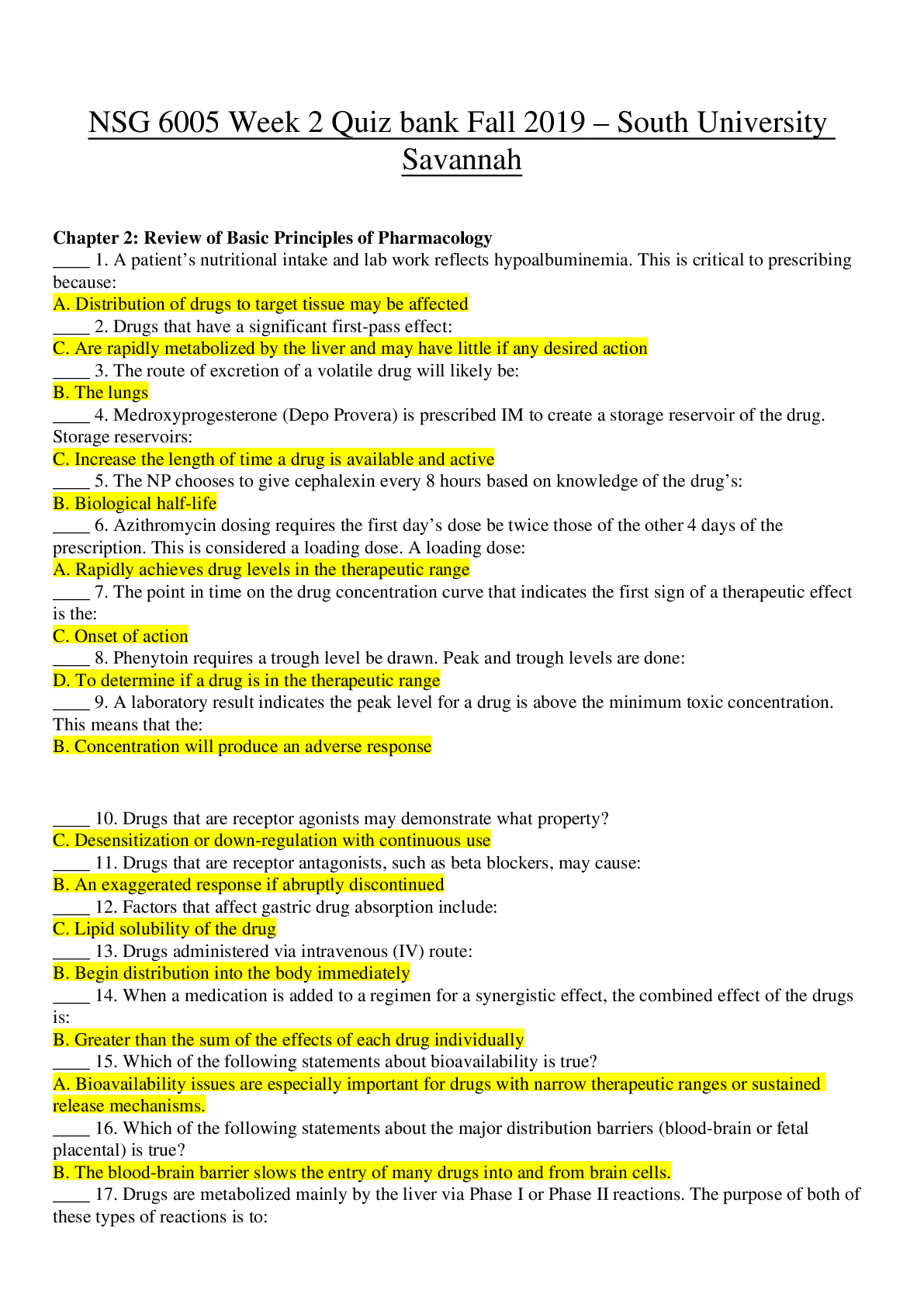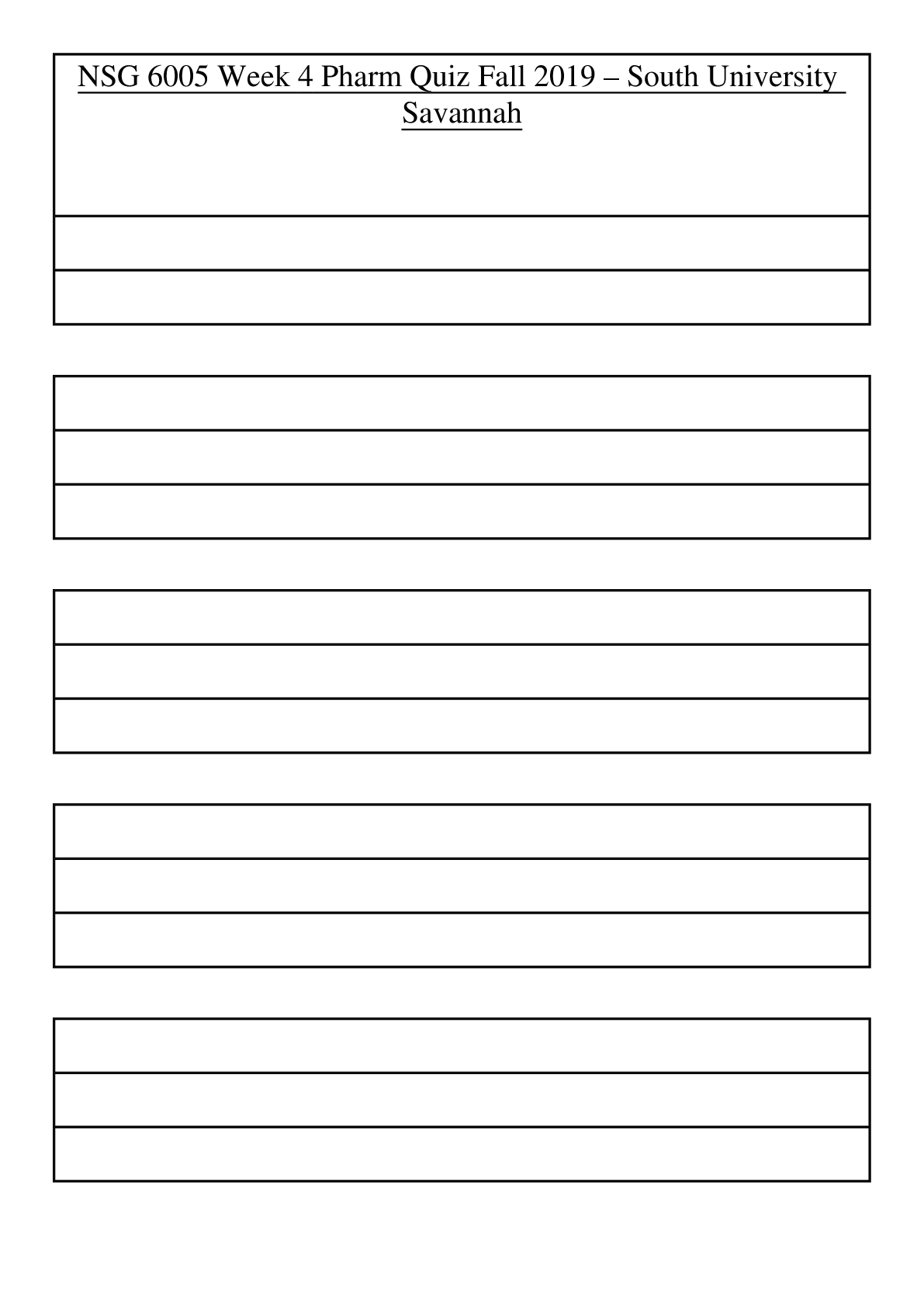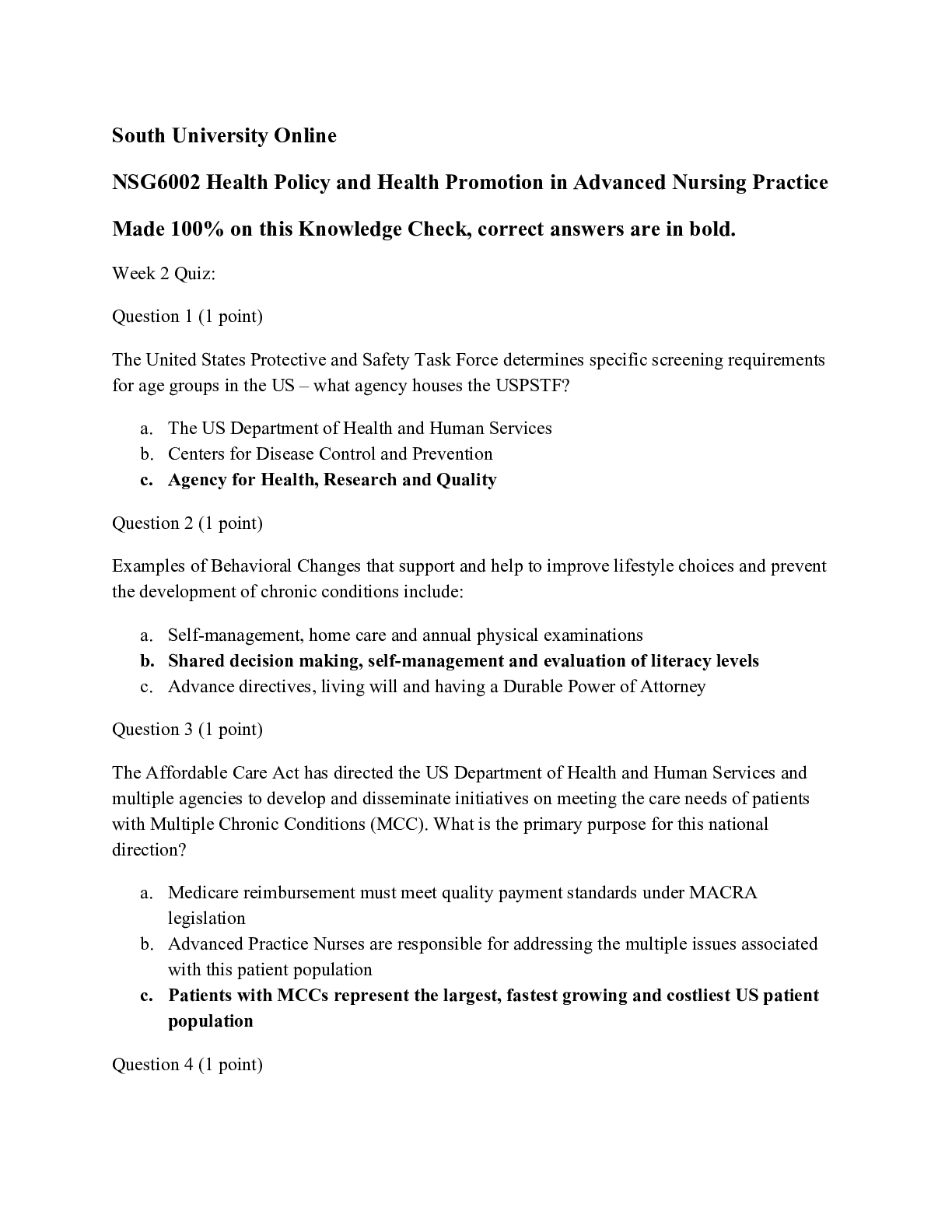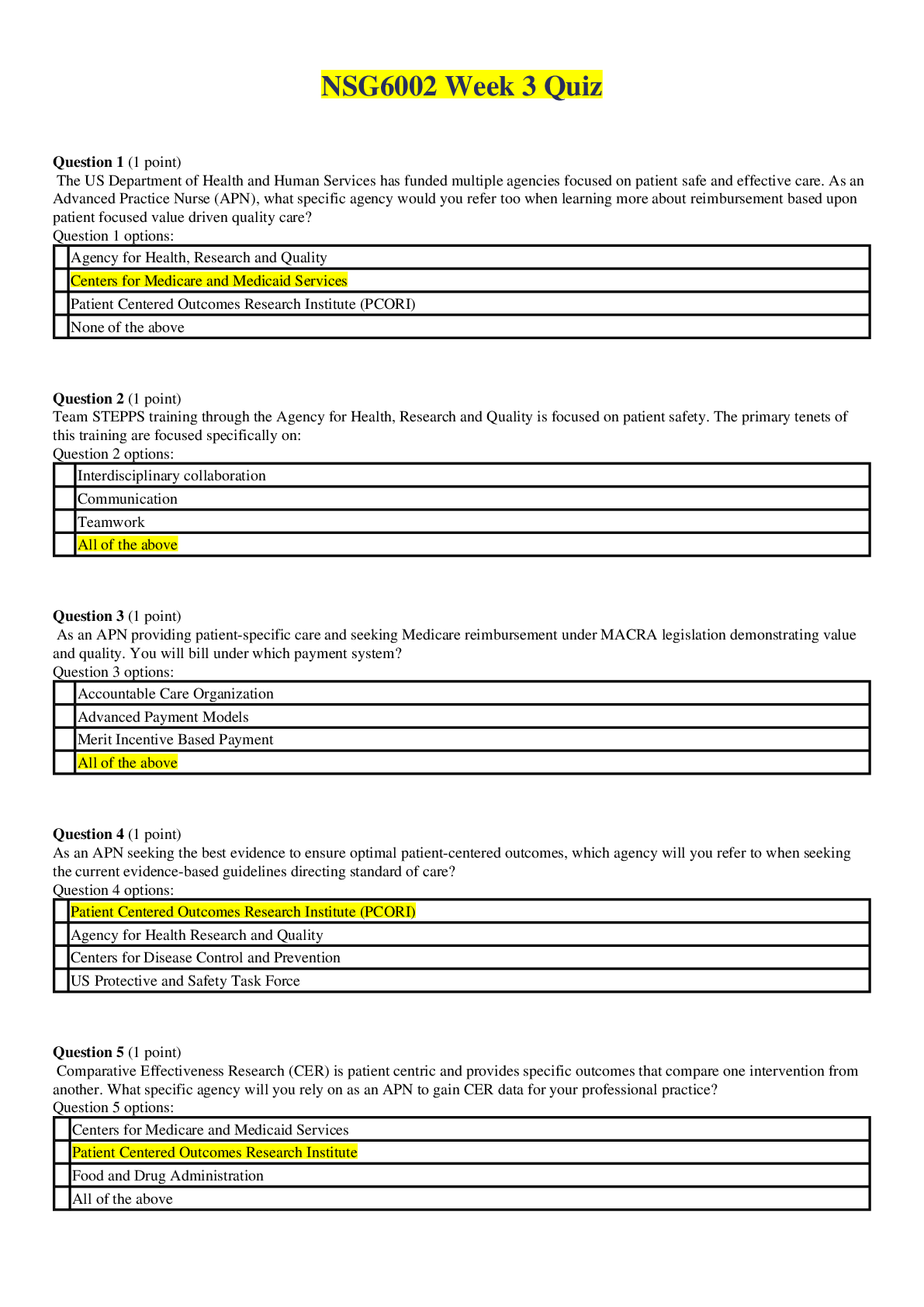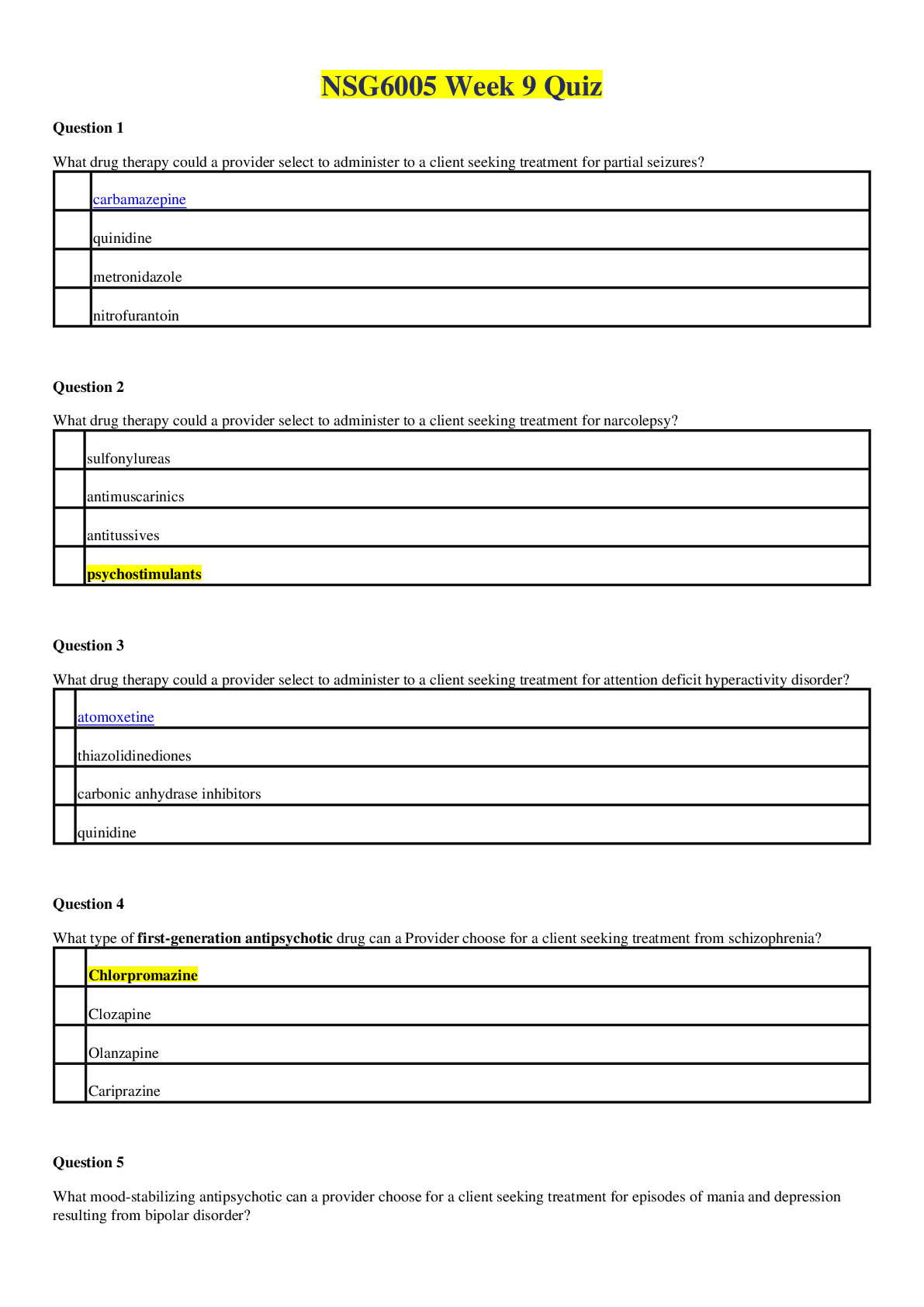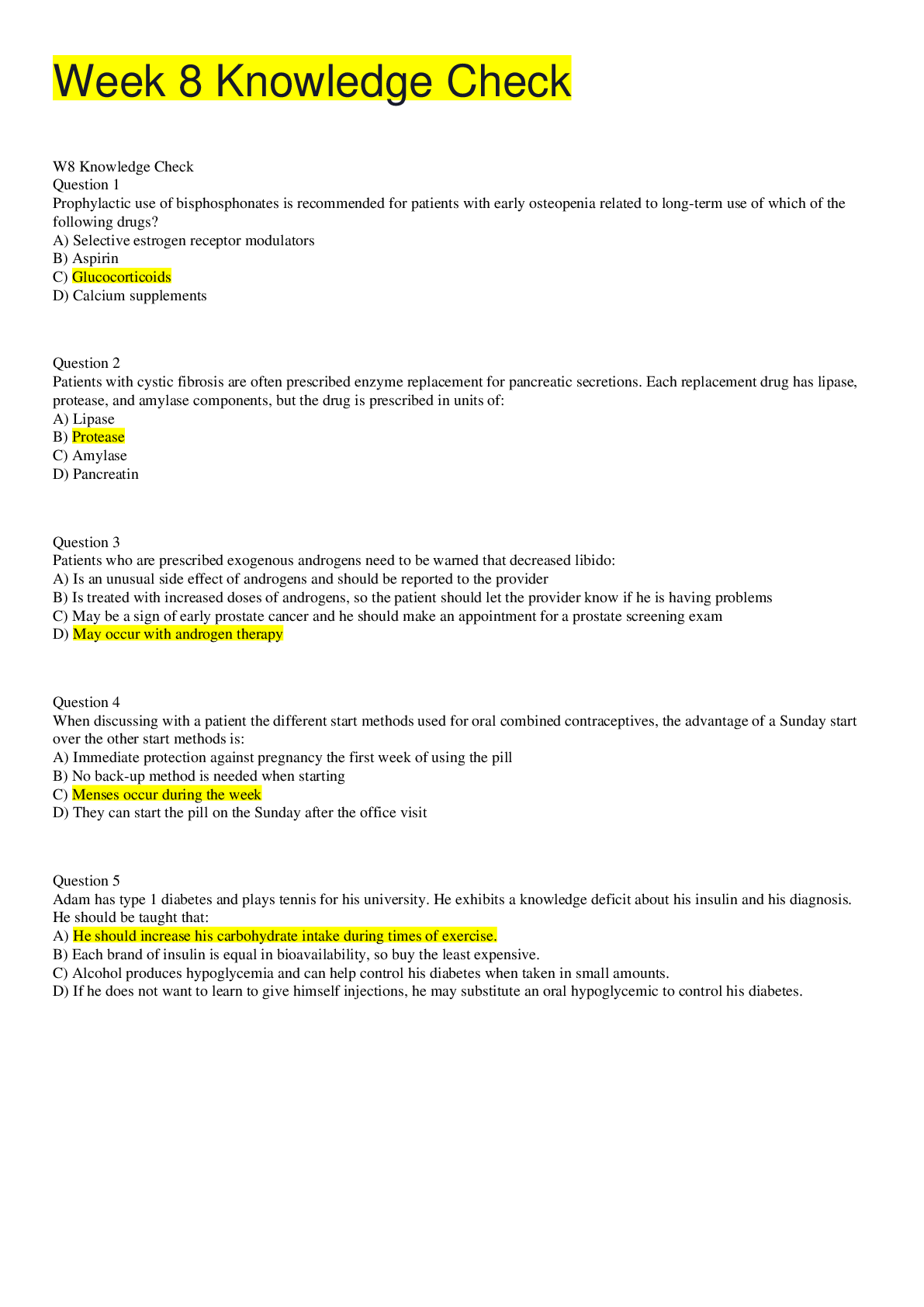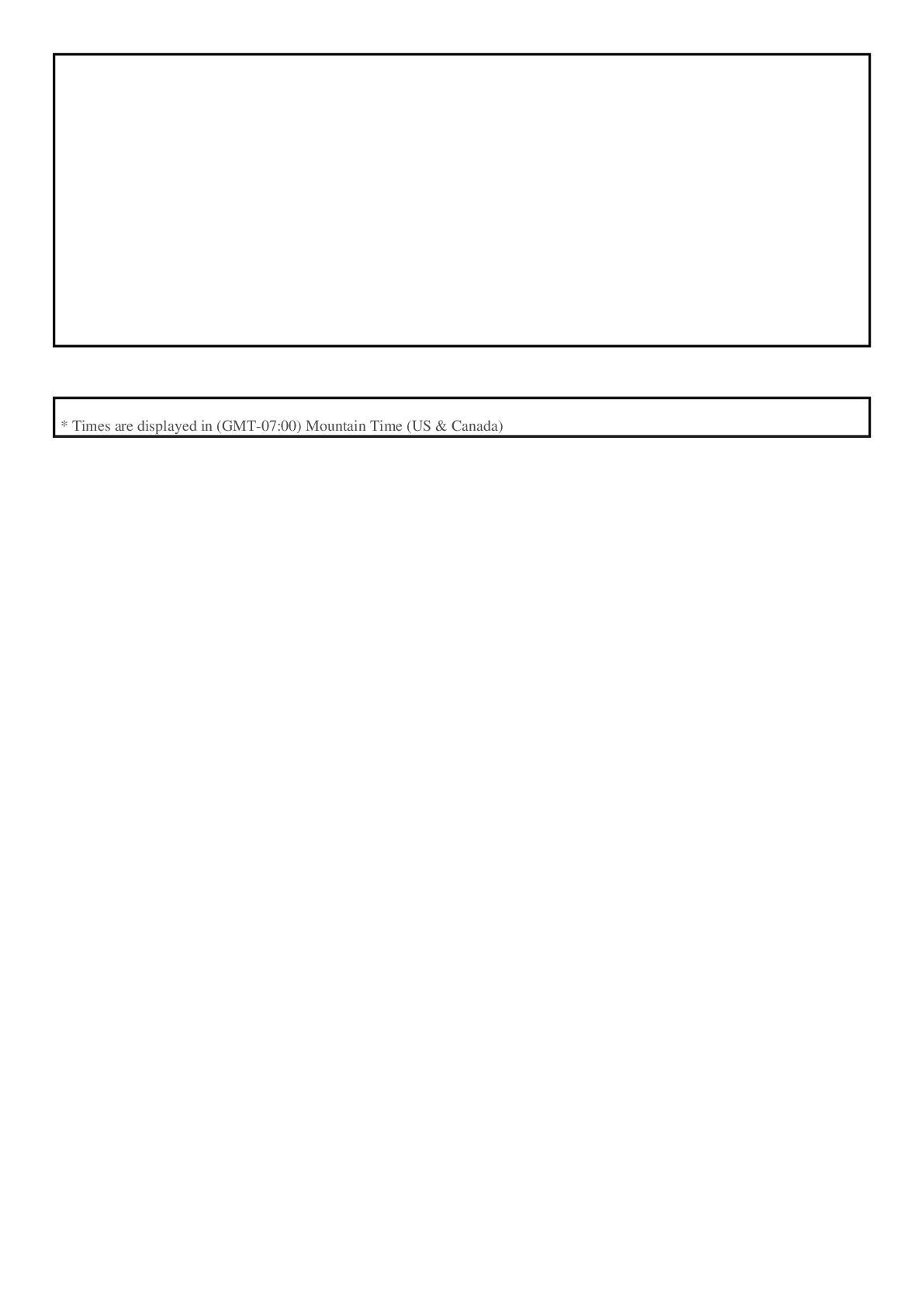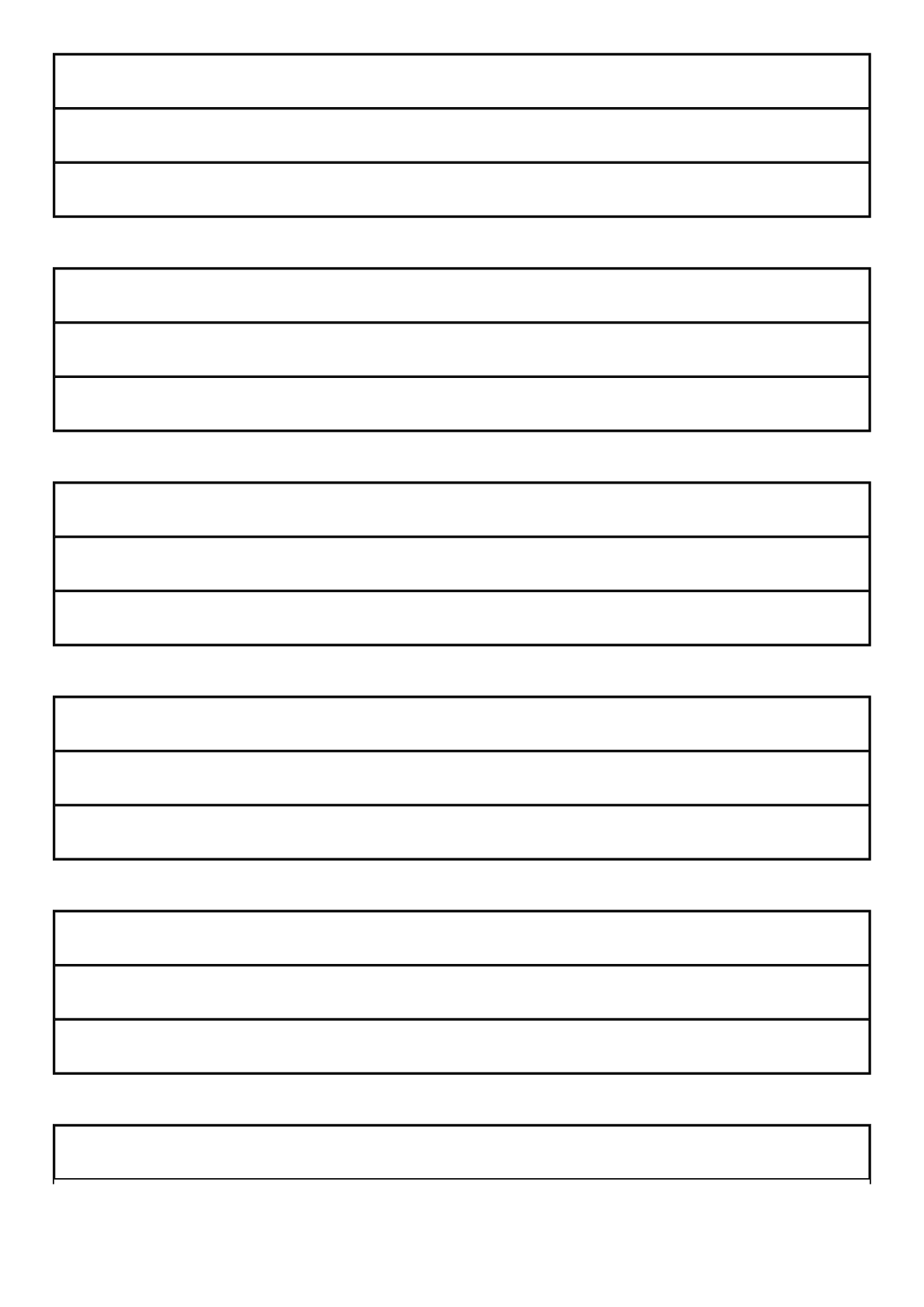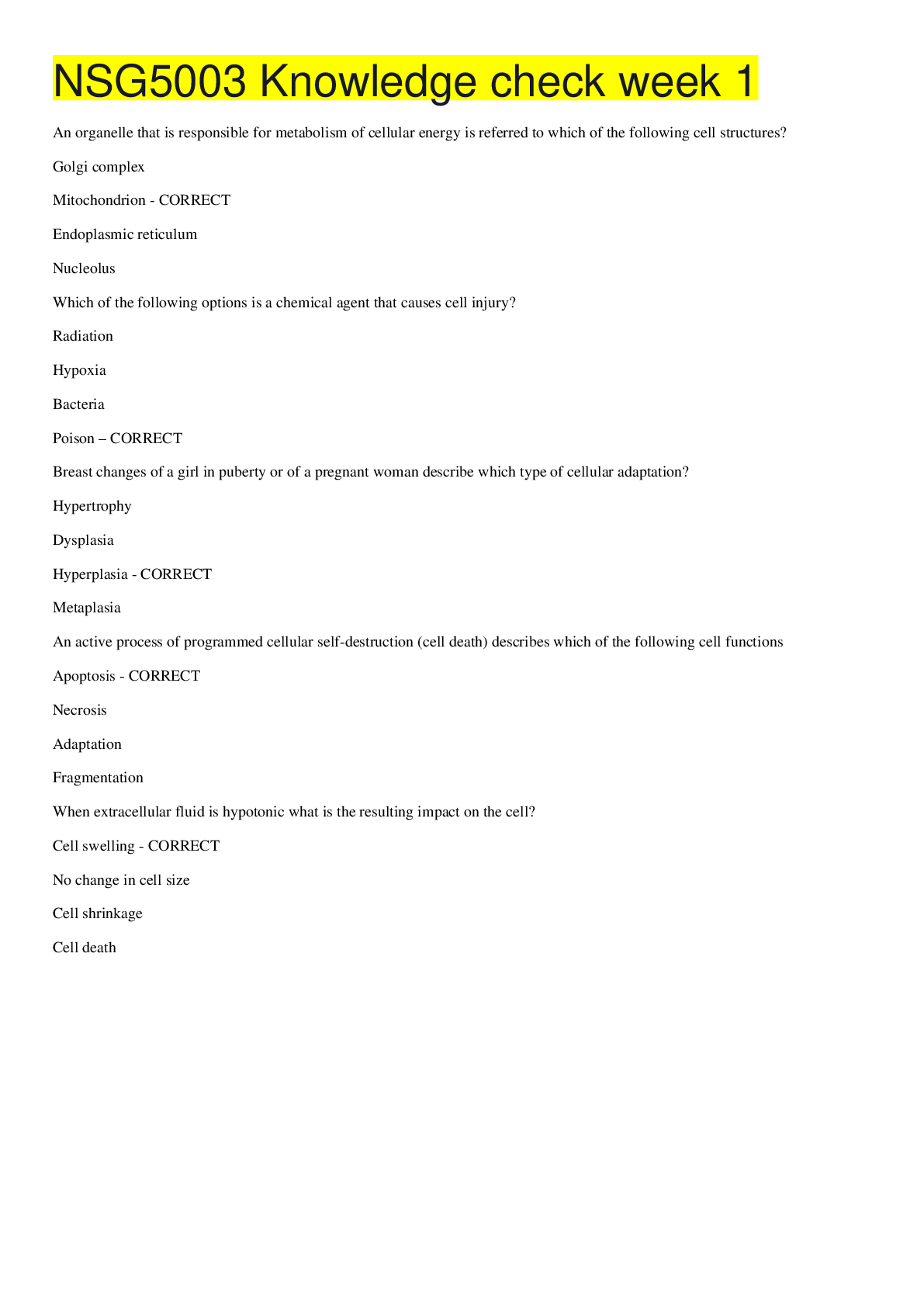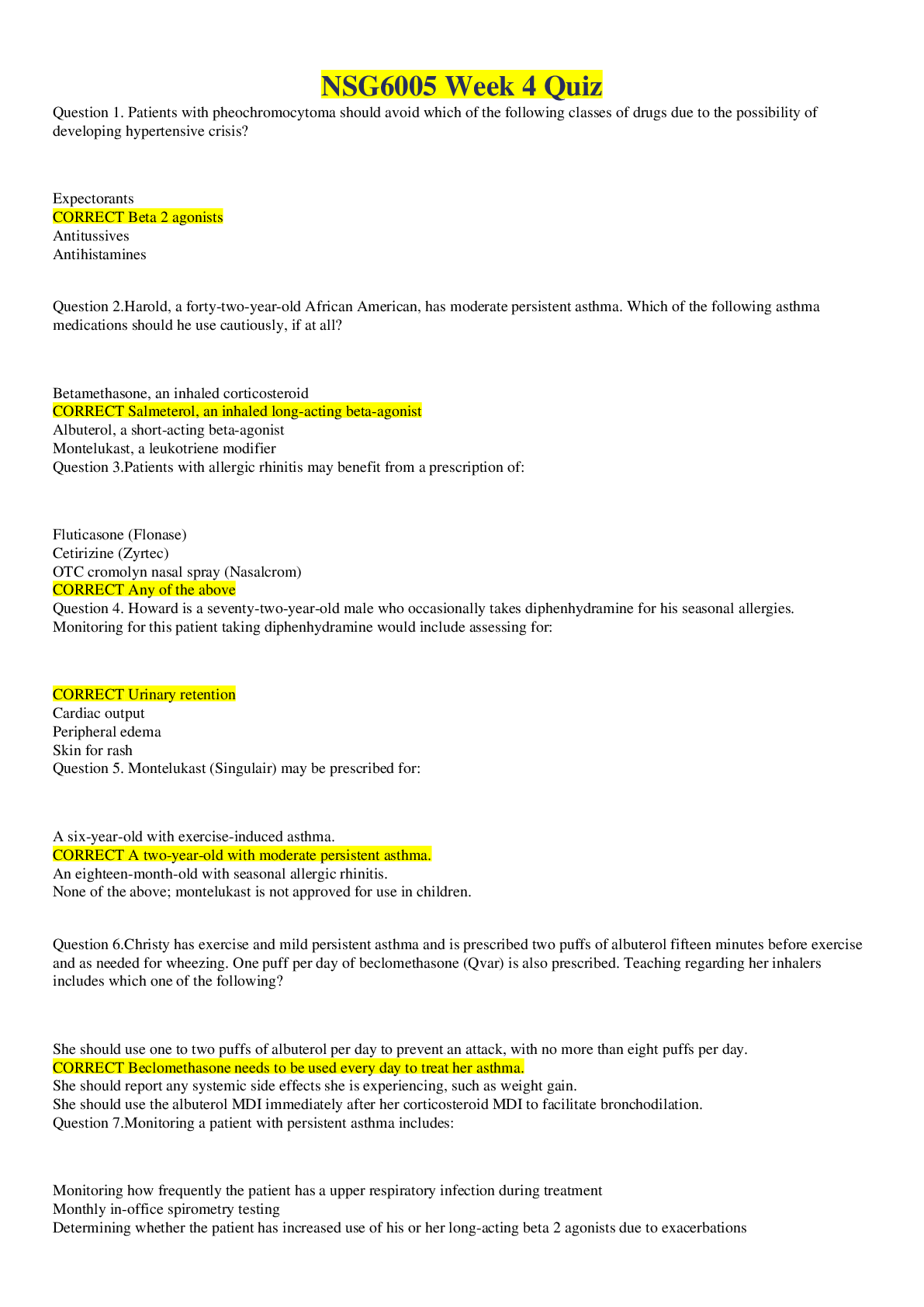*NURSING > EXAM > NSG6005 Week 6 Quiz / NSG 6005 Week 6 Quiz (New, 2020): South University (SATISFACTION GUARANTEED) (All)
NSG6005 Week 6 Quiz / NSG 6005 Week 6 Quiz (New, 2020): South University (SATISFACTION GUARANTEED)
Document Content and Description Below
Week 6 Quiz Pharm NSG6005 Question 1 (1 point) Josie is a 5 year old who presents to the clinic with a 48-hour history of nausea, vomiting, and some diarrhea. She is unable to keep fluids down ... and her weight is 4 pounds less than her last recorded weight. Besides IV fluids, her exam warrants the use of an antinausea medication. Which of the following would be the appropriate drug to order for Josie? Question 1 options: A) Prochlorperazine (Compazine) B) Meclizine (Antivert) C) Promethazine (Phenergan) D) Ondansetron (Zofran) Save Question 2 (1 point) Patrick is a 10 year old who presents with constipation. Along with diet changes, a laxative is ordered to provide more rapid relief of constipation. An appropriate choice of medication for a 10 year old would be: Question 2 options: A) PEG 3350 (Miralax) B) Bisacodyl (Dulcolax) suppository C) Docusate (Colace) suppository D) Polyethylene glycol electrolyte solution Save Question 3 (1 point) Gastroesophageal reflux disease (GERD) may be aggravated by the following medication that effects lower esophageal sphincter (LES) tone: Question 3 options: A) Calcium carbonate B) Estrogen C) Furosemide D) Metoclopramide Save Question 4 (1 point) An acceptable first-line treatment for peptic ulcer disease with positive H. pylori test is: Question 4 options: A) Histamine2 receptor antagonists for 4 to 8 weeks B) Proton pump inhibitor BID for 12 weeks until healing is complete C) Proton pump inhibitor BID plus clarithromycin plus amoxicillin for 14 days D) Proton pump inhibitor BID and levofloxacin for 14 days Save Question 5 (1 point) Patients who are on chronic long-term proton pump inhibitor therapy require monitoring for: Question 5 options: A) Iron deficiency anemia, vitamin B12 and calcium deficiency B) Folate and magnesium deficiency C) Elevated uric acid levels leading to gout D) Hypokalemia and hypocalcemia Save ________________________________________ [Show More]
Last updated: 1 year ago
Preview 1 out of 3 pages
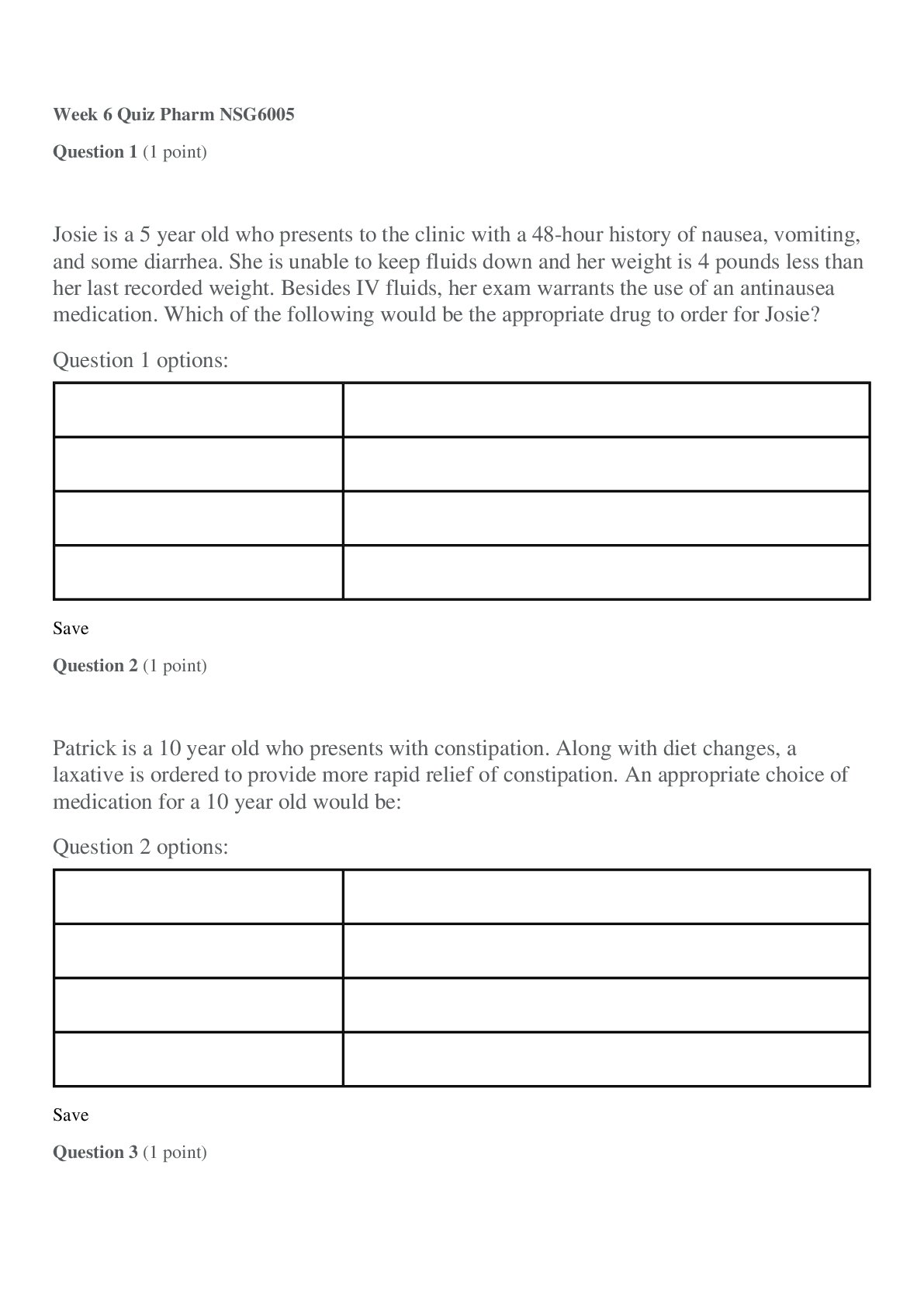
Reviews( 0 )
Document information
Connected school, study & course
About the document
Uploaded On
May 07, 2020
Number of pages
3
Written in
Additional information
This document has been written for:
Uploaded
May 07, 2020
Downloads
0
Views
66

